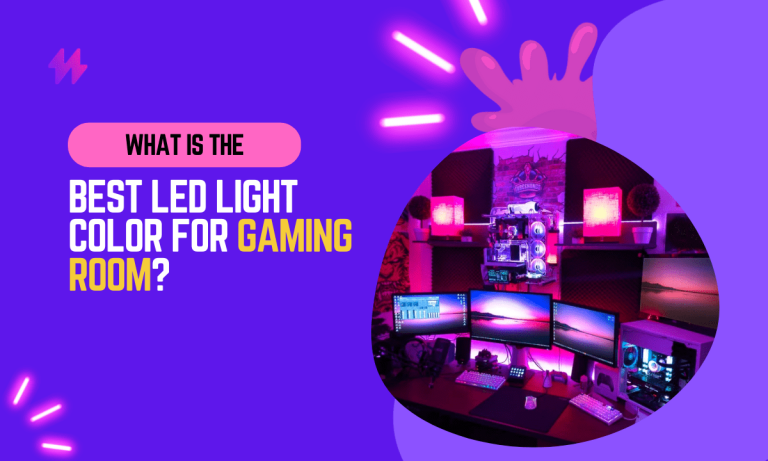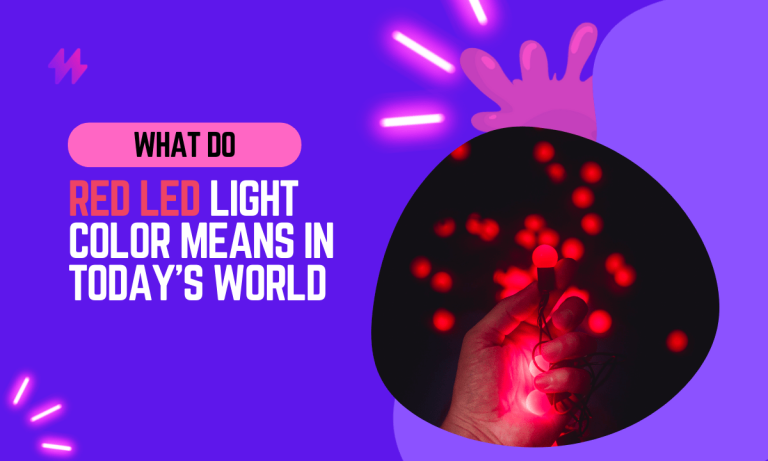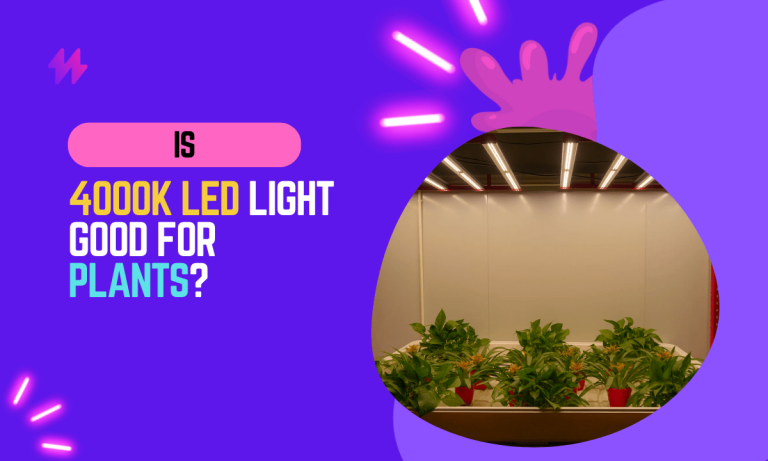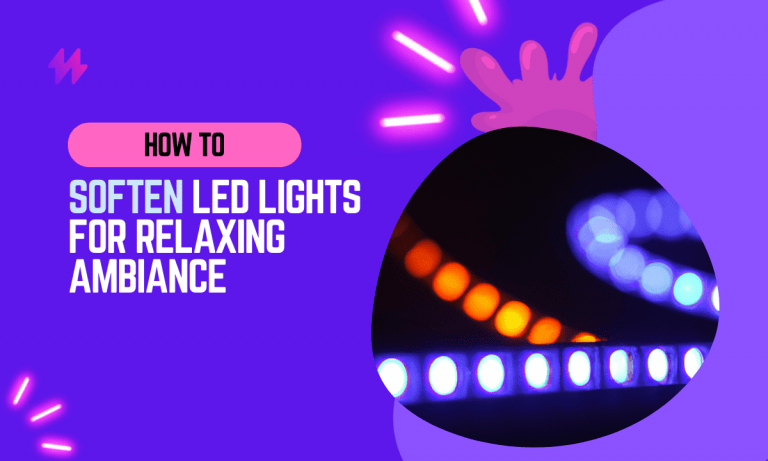Bright White vs Daylight Lighting – What’s the Difference?
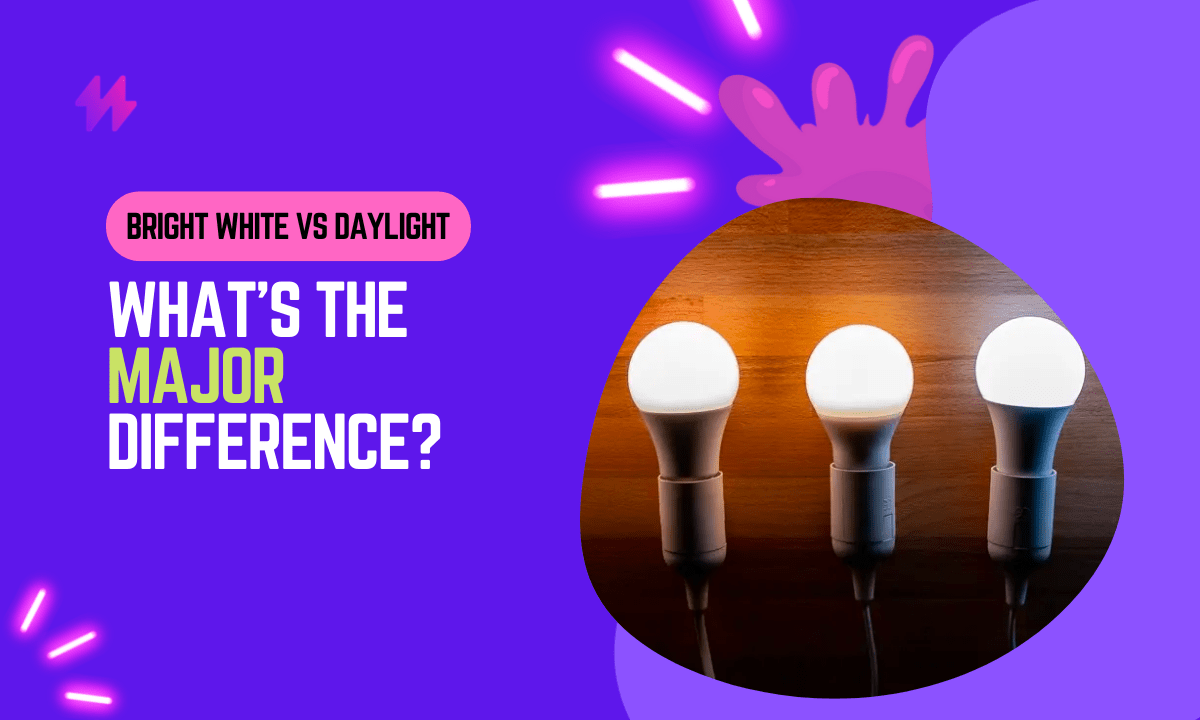
When purchasing new light bulbs for your home, you may come across different descriptions of the type of white they emit. While “Soft White” is straightforward, the terms “bright white” and “daylight” can be a bit confusing.
The truth is that daylight is a type of bright white light, but there are nuances in the specific shades of white they display.
A bright white bulb produces a pure white light, while a daylight bulb imitates the color temperature of natural daylight, which is situated higher on the Kelvin temperature scale and appears more blue-white.
To explain the variations in more detail, let’s get into more detail.
When selecting lighting solutions, it’s essential to consider the characteristics of different bulbs to achieve the desired atmosphere in your space. The contrast between warm lighting environments and bright white vs daylight lighting can significantly impact your mood and overall interior lighting design.
Bright White vs Daylight Lighting: What’s the Difference?
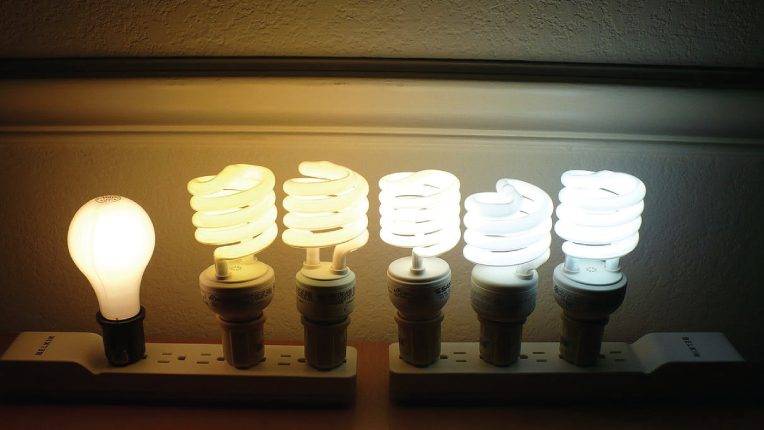
When discussing different colors of white light bulbs, we refer to the color temperature measured in Kelvins (K). The Kelvin scale ranges from approximately 1000K to 10000K and represents the color of the light on a white spectrum.
The lower Kelvin values lean towards orange tones, while the higher values lean towards blue, although they are all variations of white light.
Bright White and Daylight bulbs are two different options along this Kelvin scale. Typically, a Bright White bulb has a Kelvin rating of around 3000K, while a Daylight bulb is closer to 5000K.
However, it’s important to note that “Bright White” and “Daylight” are not scientific; only the Kelvin rating provides a precise measurement. LED light manufacturers may label a 3500K bulb as “Bright White” and a 4500K bulb as “Daylight.”
Understanding the Kelvin scale helps you choose the right bulb. A 3000K rating is considered almost pure white, striking a good balance between orange and blue tones to produce very white light. Anything up to approximately 3500K will likely have a similar appearance.
Around 4000K, a slight blue hint becomes noticeable in the white light, but it still appears natural until around 5500K, producing a cool blue-white light. Around the 5000K mark, the light will resemble natural daylight.
When discussing different colors of white light bulbs, we refer to the color temperature measured in Kelvins (K). The Kelvin scale ranges from approximately 1000K to 10000K and represents the color of the light on a white spectrum. The lower Kelvin values lean towards orange tones, while the higher values lean towards blue, although they are all variations of white light. Bright White and Daylight bulbs are two different options along this Kelvin scale. Typically, a Bright White bulb has a Kelvin rating of around 3000K, while a Daylight bulb is closer to 5000K. However, it’s important to note that “Bright White” and “Daylight” are not scientific; only the Kelvin rating provides a precise measurement. LED light manufacturers may label a 3500K bulb as “Bright White” and a 4500K bulb as “Daylight.” Understanding the Kelvin scale helps you choose the right bulb. A 3000K rating is considered almost pure white, striking a good balance between orange and blue tones to produce very white light. Anything up to approximately 3500K will likely have a similar appearance. Around 4000K, a slight blue hint becomes noticeable in the white light, but it still appears natural until around 5500K, producing a cool blue-white light. Around the 5000K mark, the light will resemble natural daylight. Choosing the correct light bulb type can influence your mood lighting significantly, particularly in spaces where ambient light is a priority. With advancements in LED lighting, you can now enjoy a range of brightness levels, enhancing the overall illumination in your home.
Bright White vs Daylight Lighting: What’s the Difference & Comparison Table
| Aspect | Bright White Bulb | Daylight Bulb |
|---|---|---|
| Color Temperature | 3000K-3500K | 5000K |
| Light Appearance | Pure white | Blue-white |
| Best Use | General lighting (Bathrooms, hallways, and bedrooms) | Task lighting (Offices, garages, kitchen) |
| Ambiance | Welcoming, bright and alert | Energetic, focussed |
| Energy Efficiency | Energy-efficient | Energy-efficient |
Bright White vs Daylight Lighting: What’s the Difference and Which Is Brighter?
The concept of brightness can be viewed from two perspectives: color temperature and actual luminosity.
When considering color temperature alone, a Daylight bulb will appear brighter than a Bright White bulb because it closely resembles the hue of natural daylight. However, it’s worth noting that the difference in brightness based on color temperature is generally minimal, as bright white bulbs still provide bright and crisp light.
On the other hand, when discussing brightness in light bulbs, the actual luminosity, measured in lumens, is more significant. Lumens directly measure how bright a bulb is.
For instance, a 40-watt equivalent LED bulb designed to replicate daylight may have a brighter color, but it will be considerably less powerful in terms of luminosity than a 100-watt equivalent bright white bulb.
If you’re curious about the connection between brightness and power usage, our Lumen to Watt calculator might be just what you need.
From a scientific standpoint, the bulb with higher luminosity will provide more lumens, resulting in greater brightness. However, if the bulbs have equal lumens, the daylight bulb will appear brighter due to its color temperature.
Have you ever wondered about the difference between Cool White and Neutral White lighting?
Understanding the distinction between different types of bulbs is crucial for achieving the right ambiance in your space. By utilizing various lighting dimmers and smart light bulbs, you can create a tailored environment that enhances mood lighting and meets your illumination needs effectively.
Bright White vs Daylight Lighting: What’s the Difference?
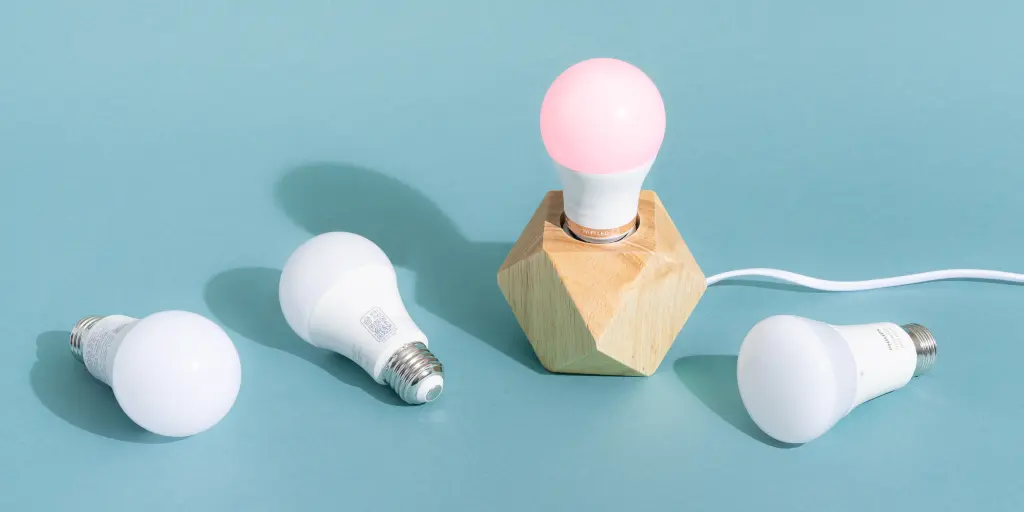
Most people are familiar with Bright White and Daylight bulbs, but there are also many other types of light bulbs on the market that offer different lighting options.
In addition to Bright White and Daylight bulbs, the lighting market features a variety of other light bulb styles, including incandescent and LED options. Selecting the right lighting temperature is vital, as it can significantly impact the overall illumination and atmosphere of your space, especially when utilizing lamps and light fixtures designed to enhance ambience.
- Soft white bulbs have a Kelvin rating of 2700K to 3000K and are often used in areas where relaxation is important, such as bedrooms or living rooms.
- Bright White bulbs have a Kelvin rating of 3000K to 3500K and are ideal for areas where activities such as reading and studying will take place.
- Cool White bulbs have a Kelvin rating between 4000K to 4500K, providing a bright light perfect for task lighting applications.
- Bright Daylight (Daylight Deluxe) bulbs can range from 5000K to 6500K and provide brighter light than natural Daylight but still appear white.
Bright White vs Daylight Lighting: What’s the Difference?
Directly answering this question is challenging due to the variability of natural light’s color temperature, which is influenced by factors such as time of day and weather conditions.
To provide a simplified response, the closest bulb to natural light, specifically the midday sun on a clear day, would be a daylight bulb with a color temperature of around 5000K.
A soft or warm white bulb is designed to replicate the color temperature of a sunset or sunrise, making it ideal for creating a relaxing atmosphere in the evening.
Daylight Deluxe bulbs aim to imitate the color of light on a warm, cloudy day when the presence of clouds reduces some of the orange tones in the sunlight.
Choosing the right lighting solution can make a significant difference in achieving the desired ambiance in your space. By understanding the importance of color temperature and selecting suitable options like LED lights, Bright White or Daylight bulbs, you can effectively enhance your mood lighting and fully meet your lighting needs.
Bright White vs Daylight Lighting: What’s the Difference?
Bright White and Daylight bulbs are the two main types of light available. Bright White is ideal for task lighting applications, while Daylight offers a softer, more calming effect. Bright white bulbs have a color temperature of 3000K, while daylight bulbs are closer to the 5000K mark.
In conclusion, the distinction between bright white and daylight lighting options plays a critical role in how spaces are perceived and how they function under artificial light. Bright white lights, typically defined by a color temperature in the range of 3000K to 4000K, emit a clean and neutral light that enhances the vividness of colors without skewing color accuracy. This type of lighting is ideal for spaces that require clear visibility and a touch of warmth, making them perfect for living areas, kitchens, and bathrooms where a welcoming yet functional atmosphere is desired. The neutral tone helps in reducing strain on the eyes during tasks that require attention to detail, such as cooking or reading.
Daylight bulbs, on the other hand, offer a higher color temperature starting from 5000K and can go up to 6500K, resembling the color spectrum of natural daylight. This quality makes daylight lighting particularly well-suited for environments where precise color perception and high contrast visibility are necessary. Applications such as home offices, workshops, and garages benefit greatly from daylight bulbs, as the cooler, bluer light enhances concentration and increases alertness. Additionally, daylight LED bulbs are often used in settings where artists or designers work, as they provide excellent color accuracy and reduce the yellow tint that can alter the appearance of paints and fabrics. Understanding the specific needs of your space and how lighting can impact your daily activities will help you make an informed decision between bright white and daylight lighting, ensuring that your environment is both functionally and aesthetically aligned with your goals.
Bright White Vs Daylight Lighting – What’s The Difference | Understanding Bright White Lighting
Bright white lighting is characterized by its higher color temperature, typically ranging from 4000K to 5000K. This distinct light temperature produces a cooler, more vibrant illumination that often resembles natural daylight, making it an excellent choice for spaces requiring task-oriented lighting. Commonly used in environments like offices and kitchens, bright white lighting enhances visibility and focus, contrasting sharply with the warmer tones of traditional incandescent bulbs. LED lighting options, such as LED light bulbs and bright daylight bulbs, have become popular for their energy efficiency and longevity. The balance between brightness and color perception is crucial; the right light fixtures can significantly influence ambiance, making bright white lighting an ideal choice for primary background lighting in both residential and commercial settings. Understanding the nuances of bright white vs daylight lighting will enable individuals to select the appropriate light bulbs to meet their specific needs and preferences.
Bright White vs Daylight Lighting – What’s the Difference | Characteristics of Bright White Lighting
Bright white lighting typically features a color temperature ranging from 3000K to 5000K, presenting a cooler, whiter appearance compared to softer options. This lighting is often found in environments that require high brightness for visibility and focus, such as offices and retail spaces. Many people opt for bright white bulbs, including LED and halogen types, for their ability to enhance the appearance of colors and provide a more vibrant light. The use of track lighting and overhead illumination is common, as it effectively distributes bright light throughout the space.
The characteristics of bright white lighting extend to its application in various settings. It is particularly effective in areas where clarity and detail matter, such as kitchens, bathrooms, and workspaces. Many people utilize bright white bulbs, including standard light bulbs and smart bulbs, for their versatility and performance. The bright light can help improve task lighting, ensuring ample illumination for activities ranging from reading to intricate hobbies. As more consumers explore different lighting options, understanding the nuances of bright white lighting and its distinct properties compared to daylight options becomes increasingly important.
Common Uses for Bright White Lighting
Bright white lighting serves various purposes across residential and commercial spaces. Commonly found in kitchens and workspaces, this type of lighting provides essential illumination that enhances visibility for tasks such as cooking and reading. Bright white bulbs are often used in overhead lights and pendant fixtures to create a vibrant atmosphere that mimics natural daylight. They are particularly effective during daylight saving time, as they help maintain brightness levels that encourage productivity and alertness throughout the day.
Bright white lighting is also viewed as an excellent choice for retail environments where showcasing products is vital. The cool, crisp light emitted from bright white LEDs or incandescent lamps can accentuate colors and details, drawing attention to merchandise. This lighting contrasts well with vibrant displays and can elevate the overall shopping experience. Utilizing bright white bulbs in public areas and security lighting not only enhances safety but also creates a welcoming ambiance that encourages foot traffic.
Exploring Daylight Lighting
Daylight lighting mimics the natural appearance of sunlight, enhancing both visibility and ambiance in various settings. This type of lighting boasts a higher color temperature than bright white options, typically ranging from 5000K to 6500K, which creates a cooler, more vibrant environment. The daylight bulbs project a bright, crisp white light that can invigorate spaces and improve mood, especially during daytime hours. Ideal for tasks that require precision, such as office work or intricate hobbies, daylight lighting helps reduce eye strain and enhances color contrast. Unlike traditional incandescent light bulbs, which emit a warm glow, daylight options provide ample illumination that closely resembles the brightness of daytime sunlight, making them suitable for both residential and commercial applications. Whether used in ceiling lighting, table lamps, or portable illumination, these high-powered daylight bulbs transform any area into a well-lit environment, reflecting the significant differences between bright white and daylight options.
Features of Daylight Lighting
Daylight lighting is designed to emulate natural sunlight, creating a bright and vibrant atmosphere. Characterized by a higher color temperature, typically around 5000K to 6500K, this lighting produces a cooler, bluish-white hue. Such a light color helps improve visibility and accentuate colors, making it ideal for tasks that require precision. Unlike warm lighting, which casts a yellowish glow, daylight bulbs promote a feeling of alertness and focus, similar to the morning sun. This is particularly effective in spaces needing general illumination or where visibility is crucial.
The applications of daylight lighting extend to various settings, including residential and commercial areas. In homes, it can be used in living rooms, kitchens, or workspaces where ample light is necessary. Public lighting options, such as streetlights, also benefit from this type of lighting, improving safety and visibility. For office environments, daylight LEDs can significantly enhance productivity by providing a crisp and clear light that mimics natural daylight. Proper light fixtures like uplighted lamps or pendant lights using daylight bulbs can create a well-lit atmosphere that increases engagement and efficiency.
Common Applications of Daylight Lighting
Daylight lighting is often utilized in environments that benefit from natural illumination, creating a vibrant and energetic atmosphere. Common applications include workspaces, where the daylight color temperature supports productivity and enhances focus. Offices frequently pair daylight bulbs with central lighting to achieve a harmonious balance that minimizes eye strain. These light bulbs project a more accurate color representation, making them ideal for tasks that require attention to detail, such as graphic design or medical examinations. The cool light quality of daylight bulbs also complements open-shelf lighting and accent lamps, showcasing colors and textures effectively.
In residential settings, daylight lighting serves to brighten living areas and kitchens, contributing to a lively and inviting ambiance. Many homeowners opt for these bulbs in fixtures that require higher brightness levels, such as floor lamps or kitchen cabinets, to ensure efficient task lighting during the day. The natural daylight option not only reduces reliance on traditional incandescent lighting but also improves overall light output in spaces requiring more illumination. This shift toward daylight versus soft white bulbs enables families to enjoy a brighter experience, especially during late evening hours when supplemental lighting becomes necessary.
Bright White vs Daylight Lighting – A Comparative Analysis
Bright White lighting typically falls within a range of 3000K to 4000K on the color temperature scale, offering a balance of cool and warm tones. This type of lighting is often found in various applications, such as residential environments where bright white light bulbs produce an energetic atmosphere ideal for kitchens and workspaces. In contrast, Daylight lighting usually measures around 5000K to 6500K, mimicking natural daylight with a cooler, bluish hue. This common daylight color is particularly effective for tasks requiring high visibility, making it suitable for office work and industrial settings. The distinction between ambient lights provides insight into their various use cases; while warm ambient lighting enhances comfort and relaxation, bright white lighting serves functional purposes, illuminating spaces efficiently. Understanding Bright White vs Daylight Lighting – What’s the Difference informs choices about the right light bulb type for specific environments, improving overall brightness and ambiance.
Color Temperature Differences
Bright White lighting typically falls within a color temperature range of 3500K to 4100K, producing a bright, neutral white light that enhances visibility and detail. This type of illumination is often used in spaces where tasks require clear sight, such as offices and kitchens. The cool tones emitted by bright white light create an atmosphere conducive to productivity, making it ideal for work environments. In contrast, Daylight lighting mirrors the spectrum of natural daylight, generally ranging from 5000K to 6500K, which includes a bluish hue that can boost alertness and focus. Daylight bulbs project an invigorating brightness, often employed in settings that aim to replicate the effects of outdoor lighting.
The differences in color temperature between Bright White and Daylight lighting significantly influence their applications and effects on ambiance. Bright White light bulbs are commonly found in residential and commercial fixtures, offering a warm color quality perfect for living rooms or accent lamps. On the other hand, Daylight lighting is frequently utilized in industrial environments, where clarity and visual precision are paramount. The choice between these lighting options depends largely on the desired mood and functionality of the space. Whether opting for warm lighting or brighter, cooler light, understanding these distinctions is essential when selecting the right light bulbs for various settings.
Impact on Mood and Ambiance
Bright white lighting tends to create a more energizing atmosphere, making it ideal for spaces that require focus and productivity. This type of lighting is often associated with cool color temperatures that emit a bluish hue, which can enhance alertness and concentration. The use of bright white light bulbs, such as light-emitting diodes (LEDs) and fluorescent lamps, is common in industrial and office settings. These bulbs produce a sharper light, which contrasts with the softer tones of traditional warm lighting, making them suitable for environments where task performance is essential.
On the other hand, daylight lighting imitates natural sunlight, adding a relaxing and soothing quality to any setting. This type of light is characterized by a balanced white color temperature that can help reduce eye strain while providing a calm ambiance. Daylight bulbs, with their ability to enhance colors and details, are perfect for areas where comfort and a welcoming atmosphere are desired, such as living rooms or bedrooms. The choice between bright white and daylight options can significantly influence the overall mood of your space, leading to varied emotional responses depending on the light type selected.
Choosing the Right Lighting for Your Space
Selecting the appropriate lighting for your space involves understanding the nuances between Bright White vs Daylight Lighting – What’s the Difference. Bright white lighting typically produces a cooler light with a bluish tint, while daylight lighting mimics natural sunlight, providing a more balanced spectrum. This can affect how colors appear in your room, so using white bulbs can enhance the visual appeal of your decor. For living room lighting, consider warm lighting to create a calm atmosphere, while industrial lighting setups might benefit from the brighter incandescent light provided by daylight bulbs. Different light bulbs, such as LED or halogen, can offer unique features; for example, LED lighting industry advancements have led to more energy-efficient options. Incorporating accent lamps or security lighting with color contrasts can also add depth to your space. Understanding how white light bulbs work and their varying color temperatures is key to achieving the desired ambiance while ensuring tasks are illuminated effectively.
Considerations for Home Use
Choosing the right lighting for home spaces involves understanding the differences between bright white and daylight lighting. Bright white lighting offers a crisp, cool appearance that is ideal for work areas, enhancing focus and productivity. This type of light can be particularly effective in kitchens and offices, where clarity is essential. Bright white light bulbs measure around 4000K to 5000K on the Kelvin scale. They emit a bluish hue that mimics daylight, creating a vibrant environment. In contrast, daylight bulbs can closely resemble natural light, promoting a calm atmosphere that is perfect for living rooms and bedrooms.
Consider experimenting with different types of fixtures to achieve desired lighting outcomes. For example, using bright white bulbs in overhead fixtures and pairing them with warm accent lamps can balance the harshness of direct overhead light. Incorporating light dimmer switches allows for adjustments in brightness throughout the day. While traditional light bulbs can provide a familiar ambiance, newer lighting features such as LED strips and colored light bulbs offer additional customization. Choosing the right bulb type, whether incandescent, CFL, or halogen, can greatly enhance the overall appearance and functionality of a room, ensuring the right atmosphere is achieved for various activities.
Tips for Commercial Settings
Choosing the right lighting for commercial settings involves understanding the nuances between bright white and daylight lighting. Bright white lighting, often produced by fluorescent bulbs or LED fixtures, provides a cool-colored light atmosphere. This type of illumination is ideal for areas requiring focused attention, such as offices and retail spaces. In contrast, daylight lighting mimics natural sunlight with its high color temperature, promoting alertness and productivity. Incorporating both lighting types can create a balanced environment, utilizing bright white for tasks and daylight for relaxation zones.
Selecting the right fixtures and bulbs plays a crucial role in achieving the desired ambiance. For instance, accent lamps paired with daylight bulbs can enhance security lighting while creating a welcoming atmosphere. Using white bulbs in strategic locations, like cabinet lighting or floor lamps, helps maintain equal brightness throughout a space. The right lighting arrangement can drastically improve mood and functionality. Understanding Bright White vs Daylight Lighting – What’s the Difference can guide decisions in choosing the appropriate lightbulb type to complement the commercial environment.

